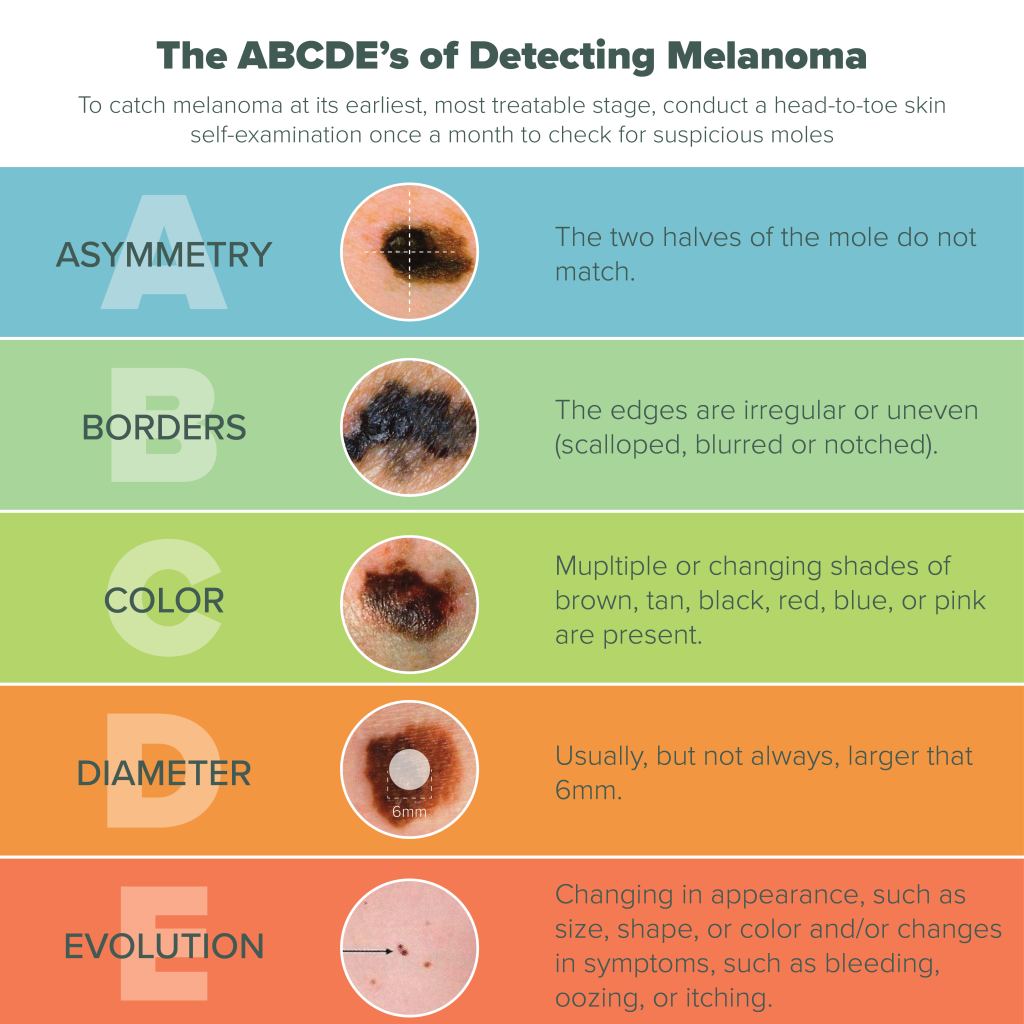The month of May is Skin Cancer Awareness Month, and here at Pure Dermatology, we want to ensure that people are informed of the causes and dangers of Melanoma. Melanoma is the deadliest form of skin cancer, although it’s easily treated if detected early. It is estimated that 1 in 5 Americans will develop skin cancer in their lifetime.
What is melanoma?
Melanoma is characterized by the uncontrolled growth of pigment-producing cells. Melanomas may appear on the skin suddenly without warning but can also develop on an existing mole.
What causes melanoma to form?
Everyone is at some risk for melanoma, but increased risk can depend on several factors. Ultraviolet rays from the sun or indoor tanning devices are dangerous to the skin, and can induce skin cancer, including melanoma. Always protect your skin while outside, and avoid using a tanning booth or tanning bed, since it increases your exposure to UV rays. In fact, using a tanning device before the age of 35 increases your risk of melanoma by 59%, and the risk increases with each use, so indoor tanning should be avoided at all costs. If you have a lot of moles, you are more at risk of developing melanoma. Having lighter skin, hair, and eye color are also risk factors. Other risk factors include having a blood relative who has had melanoma, or having a personal history of melanoma or another type of skin cancer.
How do you know if you have a melanoma?
Examine your skin regularly. If you develop a new mole or you notice a mole changing in color, size, or shape, then you should have that spot evaluated. Signs of melanoma include a change in the size, color, or shape of a mole, or a mole that becomes painful or begins to bleed or itch. A new mole or growth, particularly one that does not match your other moles, may be melanoma. A helpful tool you can use to catch any changes on your existing moles is the ABCDEs of Melanoma.
How can Pure Dermatology help?
If you notice concerning changes in any of your existing moles, schedule an appointment with us. We will examine your moles and discuss any next steps.
More Information
For more information, follow the links below:
https://www.aad.org/media/stats/conditions/melanoma-faqs
http://www.skincancer.org/skin-cancer-information/melanoma/melanoma-causes-and-risk-factors

